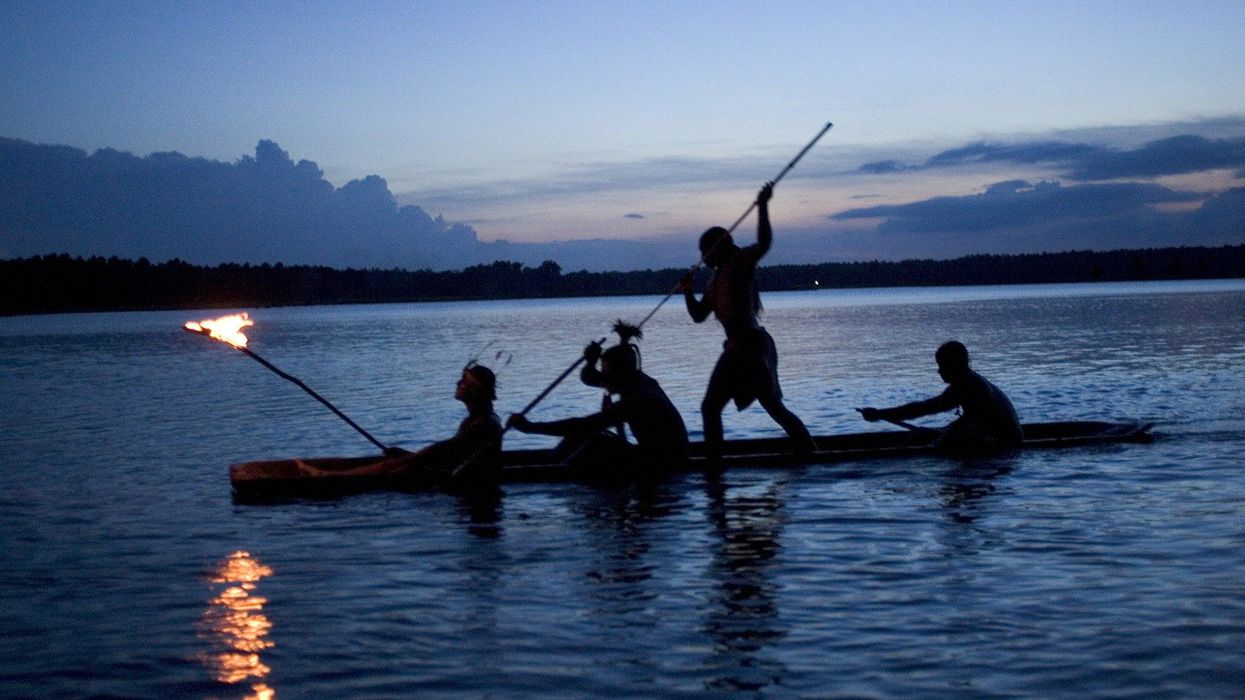Director Chloe Zhao Offers a Thorough Breakdown of Terrence Malick's 'The New World'
Terrence Malick's exploration of American space has a fan in Chloe Zhao.

The filmmaking of Terrence Malick can be both inclusive and exclusive. At different points in his career, he's chosen to invite the audience into multiple perspectives and experiences in order to get the message of the chosen story across.
That point of view fluctuates in a movie like The New World, which is simultaneously about the wonderment of discovery, the power of love, and also the foreboding evil that was colonization and genocide in the early Americas.
In a 2016 essay by Tom Gunning, he dissects the themes of the film.
"The New World shows the beginning of this destruction, but Malick’s title offers more than bitter irony," he wrote. "The film unfolds as a Blakean epic, both personal and historical, of the journey from innocence to experience."
Now, in a recent Criterion release, director Chloe Zhao reflects on the movie and talks about how Malick moves the camera to manipulate the audience. Zhao talks about what she has learned from her encounters with this masterpiece and the “an intense and deep curiosity” about humanity’s role within his and her own work.
Check it out below.
It's interesting listening to Zhao, a native of Beijing, talk about a movie about an American legend. This kind of removal from culture let her explore something completely untainted.
Malick’s 2005 epic is meditative in the way it works to tell the story of John Smith and Pocahontas. Zhao talks about the first scene, but before we get there, I wanted to include how Gunning described it for Criterion. He wrote:
"A young woman appears, shot from below and framed so that her face remains concealed. On the soundtrack, we hear the invocation of a spirit, also unseen—perhaps invisible. In this two-shot sequence, Malick introduces the film’s location and its main character, but obliquely, emphasizing their mysterious quality. These images remain incomplete but richly evocative. Our curiosity aroused, we are invited to speculate about how they fit together. But rather than firmly grounding us, the next shots (after the credits) submerge us below the surface of the water. As we gaze through this liquid medium at the grace of young women swimming, we become increasingly aware of the light that shines into the depths from above. The camera eventually looks up through the rippling medium toward the surface, glimpsing Powhatans on the shore, men on rocks who point offscreen. The following shot skims swiftly over the surface of the sea, then rises, revealing English ships at anchor. Malick gives us this dramatic incident in a curious manner, not focusing exclusively on the essential narrative event of the natives’ discovery of alien invaders but dwelling on the element of water and what it does to vision."
I think this matters because he describes an audience just like Zhao, and how she felt watching.
The story finds a pure innocence that is able to somehow balance beauty and love within a tragedy. That's not a simple thing to do, and Malick manages to make it all work while using mostly visuals. We get the point of view of Indigenous peoples watching the boats arrive, and John Smith, watching from the brig.
Eventually, this positioning will change, but the movie is that story.
This playing with perspective helped Zhao understand the story without ever knowing the legend. This was a movie about curiosity and adventure, and how those don't always lead to the same place.
I loved listening to Zhao describe what she loved about the movie. What were your favorite parts?
Let us know in the comments.











